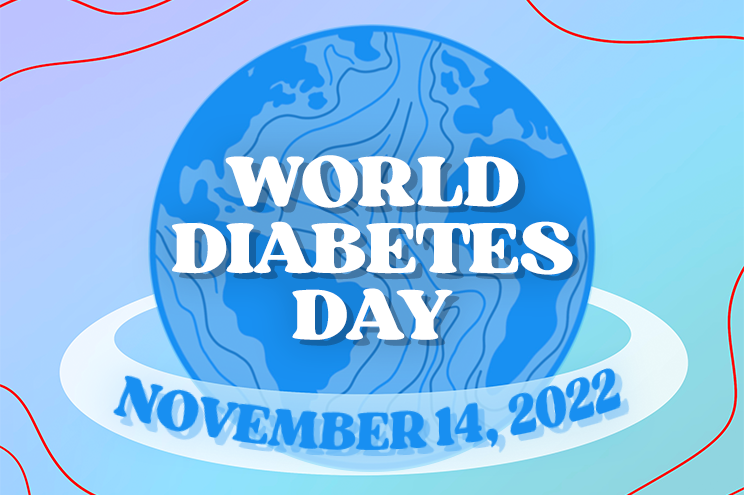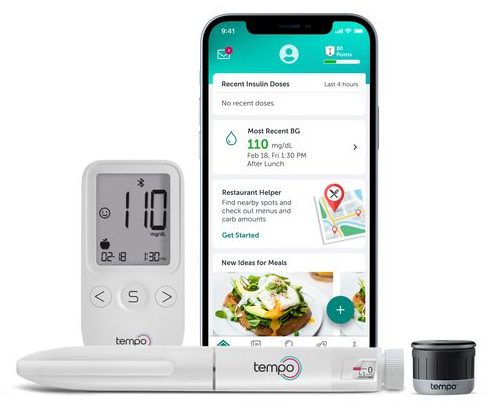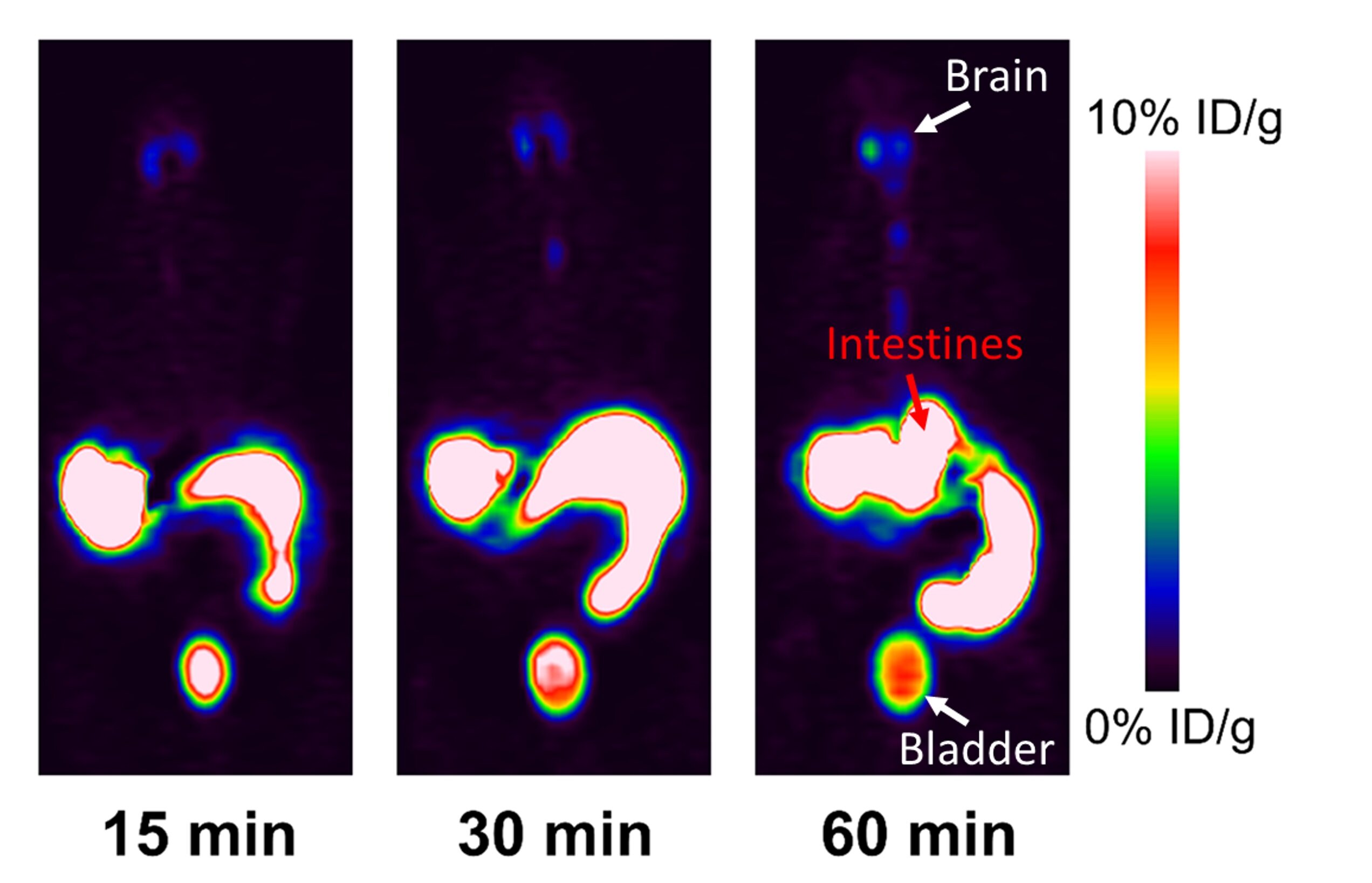World Diabetes Day is every year on November 14, first created in 1991 by the International Diabetes Foundation and the World Health Organization.
 The day 14 November was chosen to commemorate the birthday of Sir Frederick Banting, co-discoverer of Insulin along with Charles Best in 1922. The blue circle is the global symbol for diabetes awareness and the logo of World Diabetes Day. There are many ways you can help promote the global symbol of diabetes awareness: Wear blue for diabetes.
The day 14 November was chosen to commemorate the birthday of Sir Frederick Banting, co-discoverer of Insulin along with Charles Best in 1922. The blue circle is the global symbol for diabetes awareness and the logo of World Diabetes Day. There are many ways you can help promote the global symbol of diabetes awareness: Wear blue for diabetes.
Wear blue on Fridays: Wear blue on all four Fridays of November (and on World Diabetes Day) to advocate and bring awareness for diabetes and the people living with it.
Read more: ABOUT WORLD DIABETES DAY
Lilly’s new diabetes management platform to integrate Dexcom CGM was contributed by Nick Paul Taylor for MedTechDive.com, 9 November 2022.
 Lilly will make the Dexcom CGM compatible with the Tempo Personalized Diabetes Management Platform, which includes the Tempo Smart Button, Tempo Pen, and TempoSmart app. The system is a customized version of Welldoc’s BlueStar diabetes management app.
Lilly will make the Dexcom CGM compatible with the Tempo Personalized Diabetes Management Platform, which includes the Tempo Smart Button, Tempo Pen, and TempoSmart app. The system is a customized version of Welldoc’s BlueStar diabetes management app.
The platform, branded Tempo, features a reusable medical device that attaches to Lilly’s prefilled, disposable insulin pens and sends dose-related data to the compatible app.
Lilly’s U.S. launch of the platform, which is scheduled for later this year, comes seven years after it began investing in medical device research and development to counter the competitive and pricing pressures faced by its diabetes unit.
Read more: Lilly’s new diabetes management platform to integrate Dexcom CGM
Injections for diabetes, cancer could become unnecessary was shared by Jules Bernstein for Phys.org, 10 November 2022.
Researchers at UC Riverside are paving the way for diabetes and cancer patients to forget needles and injections, and instead, take pills to manage their conditions.
Some drugs for these diseases dissolve in water, so transporting them through the intestines, which receive what we drink and eat, is not feasible. As a result, these drugs cannot be administered by mouth. However, UCR scientists have created a chemical “tag” that can be added to these drugs, allowing them to enter blood circulation via the intestines.
The details of how they found the tag, and demonstrations of its effectiveness, are described in a new Journal of the American Chemical Society paper. Min Xue, UCR chemistry professor’s laboratory, was testing something unrelated when the researchers observed these peptides making their way into cells. “We did not expect to find this peptide making its way into cells. It took us by surprise,” Xue said. “We always wanted to find this kind of chemical tag, and it finally happened serendipitously.”
Testing the peptide’s ability to move through a body, the Xue group teamed up with Kai Chen’s group in the Keck School of Medicine at the University of Southern California and fed the peptide to mice. Using a PET scan—a technique similar to a whole-body X-ray that is available at USC, the team observed the peptide accumulating in the intestines and documented its ultimate transfer into the animals’ organs via the blood.
Many drugs, including insulin, must be injected. The researchers are hopeful their next set of experiments will allow them to add this tag to a wide variety of drugs and chemicals, changing the way those molecules move through the body.
Read more: Injections for diabetes, cancer could become unnecessary
Why it’s time we changed our relationship with fat was written by Tom Ireland for ScienceFocus.com, 14 September 2022.
 Fat is one of the most important elements of our diet, and the fatty tissue beneath our skin plays a part in keeping us alive and healthy. In chemical terms, fats are long, chain-like molecules that have many roles across all forms of life on Earth.
Fat is one of the most important elements of our diet, and the fatty tissue beneath our skin plays a part in keeping us alive and healthy. In chemical terms, fats are long, chain-like molecules that have many roles across all forms of life on Earth.
Among their many useful properties, they are an excellent way to store energy, and many organisms convert energy from the food they eat into reserves of fat – from the vegetable oils found in the seeds and fruits of plants, to the inches-thick layer of blubber
When we talk about body fat, we’re actually talking about the specialized cells, known as ‘adipocytes’, which store fat in various places in our bodies. Each cell holds its own droplet of liquid fat and is capable of swelling to accommodate more fat, or shrinking and releasing it as necessary. Together, these fat cells form ‘adipose tissue’, which is found in deposits just below the skin or deep in the spaces between other organs. As well as storing energy, these fat deposits help to insulate us from the cold and cushion impacts on our joints, the soles of our feet, our palms and our bums – people with no adipose tissue find it hard to sit on a chair for more than a few minutes.
Fatty tissue is part of the complex connective tissue that keeps our organs in place and is key to building the contours of our faces that make us recognizable. Perhaps more importantly, adipose tissue can be thought of as the body’s energy budget-holder, helping ensure different parts of the body have what they need, but always looking to store and save for hard times ahead. In fact, adipose tissue plays such an important role in tracking our energy requirements and coordinating our metabolism that scientists increasingly think of it as an organ of the body in its own right, albeit one that is distributed throughout the body.
“We need our adipose organ to buffer our normal fluctuations of caloric intake and expenditure,” says Prof Stephen O’Rahilly, a co-director of the University of Cambridge’s Institute of Metabolic Science.
Read more: Why it’s time we changed our relationship with fat
Eating Vegan with Diabetes was posted by Eliza Skoler for diaTribe.org, 7 November 2022.
 People who follow a plant-based diet – and consume zero animal products – are considered vegan. This means they don’t eat anything that comes from animals, including meat, fish, dairy, eggs, honey, and more. Vegetarians, on the other hand, often avoid meat but may still eat things like milk or eggs.
People who follow a plant-based diet – and consume zero animal products – are considered vegan. This means they don’t eat anything that comes from animals, including meat, fish, dairy, eggs, honey, and more. Vegetarians, on the other hand, often avoid meat but may still eat things like milk or eggs.
Can people with diabetes be vegan? Yes! In fact, a plant-based diet may actually be better for your physical health, mental well-being, and diabetes management. That said, there are some important things to consider if you have diabetes and want to switch to a plant-based diet.
What do vegans with diabetes eat? All sorts of things – vegetables and fruits, beans and nuts, whole grains, and more. There are many ingredients and recipes below to help you experiment and get started. If you decide to eat a plant-based diet, it’s important that you still get all the vitamins and nutrients that your body needs. As with any meal or snack, you’ll want to balance carbohydrates, fat, protein, and fiber.
You may find yourself more hungry as your body adjusts to this new way of eating. Remember that you still need to watch your blood sugar levels, and that carbohydrates will still cause your blood sugar to spike. Eating protein and fiber with carbohydrates can slow carbohydrate digestion and help avoid blood sugar swings. The good news here is that vegan protein sources (beans, tofu, nuts and seeds) have a lot of fiber built right in.
Here are some basic carbohydrate guidelines for anyone with diabetes, whether or not you are eating animal products:
-
- Reduce “spiky carbs.” Spiky carbs are foods that cause blood sugar levels to quickly increase and can create unpredictable swings in your glucose levels.
- Focus on “slow-carb” and low-carb foods. Slow carbs are broken down more slowly in the body and have a more predictable effect on blood sugar levels. Slow carbs include vegetables that grow above the ground (like leafy greens, broccoli, tomatoes, and cabbage), beans, and some fruits. Low-carb foods usually have little effect on blood sugar, such as nuts and dairy products, and often contain protein and healthy fats.
Read more: Eating Vegan with Diabetes


I assume then that the new Lilly pump will also use Dexcom? I hope so anyway. I had hoped they would run with dialoop. I do not know a thing about Welldoc’s BlueStar diabetes software? Have you heard of it?